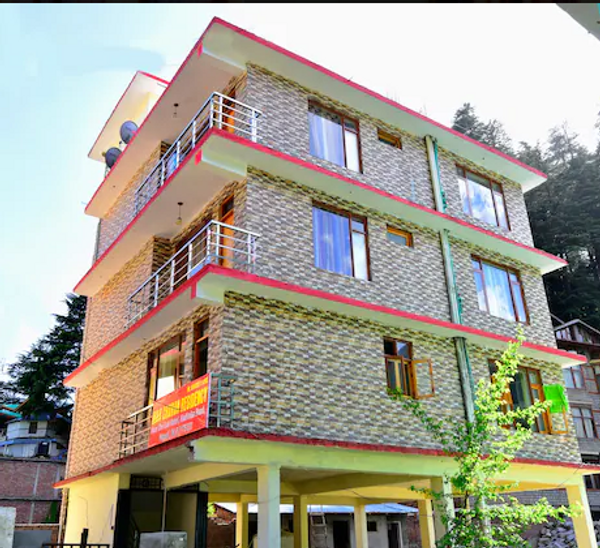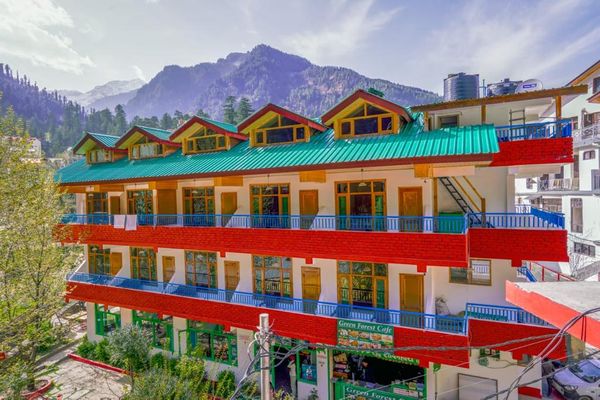A Trip to Valley of Flowers, Uttarakhand, India
 Birendra Bisht
16 May, 2025
6 mins read
34
Birendra Bisht
16 May, 2025
6 mins read
34
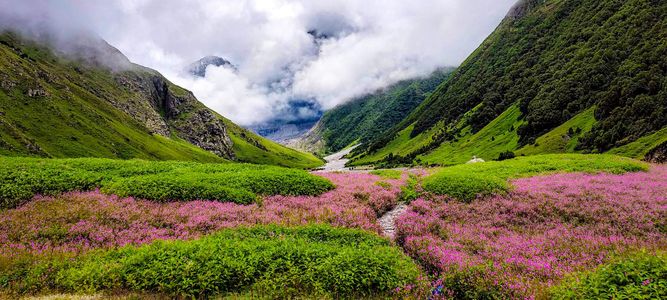
Tucked away in the heart of the Indian Himalayas lies a mesmerizing alpine wonderland – the Valley of Flowers, a UNESCO World Heritage Site nestled in the Chamoli district of Uttarakhand. Celebrated for its breathtaking natural beauty and rare Himalayan flora, this valley transforms into a vibrant palette of colors every monsoon, attracting nature lovers, trekkers, and botanists from across the globe.
Journey Begins – Reaching the Valley
The adventure begins from Haridwar or Rishikesh, two spiritual towns on the banks of the Ganges. From here, one undertakes a scenic drive through Devprayag, Rudraprayag, and Joshimath to reach Govindghat, the base village for the trek. The motorable road ends at Pulna, a few kilometers ahead of Govindghat, from where the 16 km trek to Ghangaria begins – the staging point for both Valley of flowers and Hemkund Sahib treks.
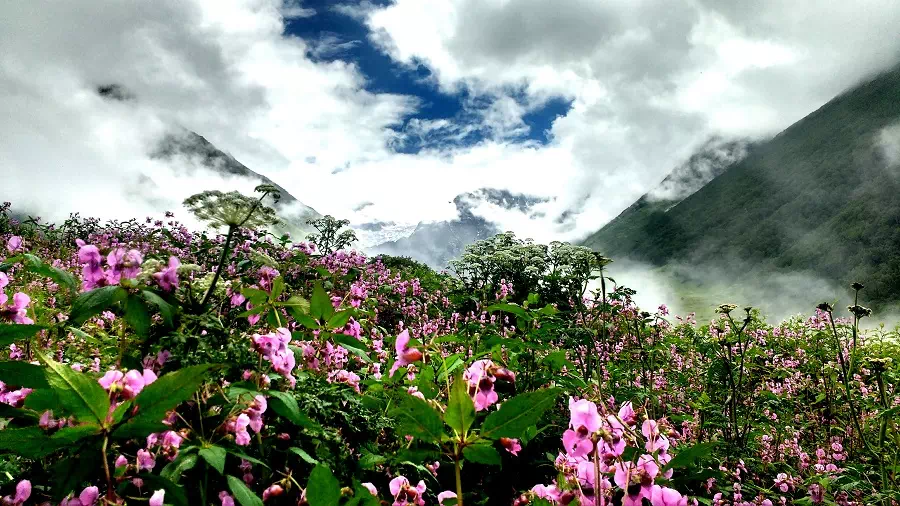
The trail is a blend of steep ascents, waterfalls, rustic bridges, and the gushing Pushpawati River flanking one side. Ghangaria, a small hamlet nestled at 10,000 ft, offers modest lodging and food options and is best known as the last inhabited village before entering the protected Valley.
Into the Heart of the Valley of flowers
The real magic unfolds as you trek 4 km further from Ghangaria to reach the Valley of Flowers National Park. Spread over 87.5 sq. km at an altitude of around 12,000 ft, the valley opens up to an explosion of alpine flowers, moss-covered rocks, and glaciers melting into clear streams.
Over 500 species of flowers bloom here during peak season — July to September — including blue poppies, cobra lilies, Himalayan bellflowers, anemones, primulas, and brahma kamal (seen more on the Hemkund Sahib trail). Each turn in the valley seems like a live painting framed by towering snow-clad peaks like Nilgiri Parbat, Ratban Parbat, and Gauri Parbat.
Flora, Fauna, and Conservation
The Valley is a biosphere reserve and a botanist’s dreamland. Rare species like the blue Himalayan poppy and lady’s slipper orchids thrive here. The park is also home to endangered animals such as the Asiatic black bear, musk deer, red fox, and snow leopard—though sightings are rare.
Because of its delicate ecosystem, overnight camping is prohibited inside the park, preserving its fragile biodiversity. Visitors are required to leave the valley by afternoon, ensuring minimal human impact.
Add-on: Hemkund Sahib
Most trekkers combine their Valley of Flowers trip with a visit to Hemkund Sahib, a revered Sikh shrine nestled at 14,200 ft. The trek is more strenuous but offers spiritual fulfillment and surreal beauty, with the glacial lake Hemkund reflecting the surrounding peaks.
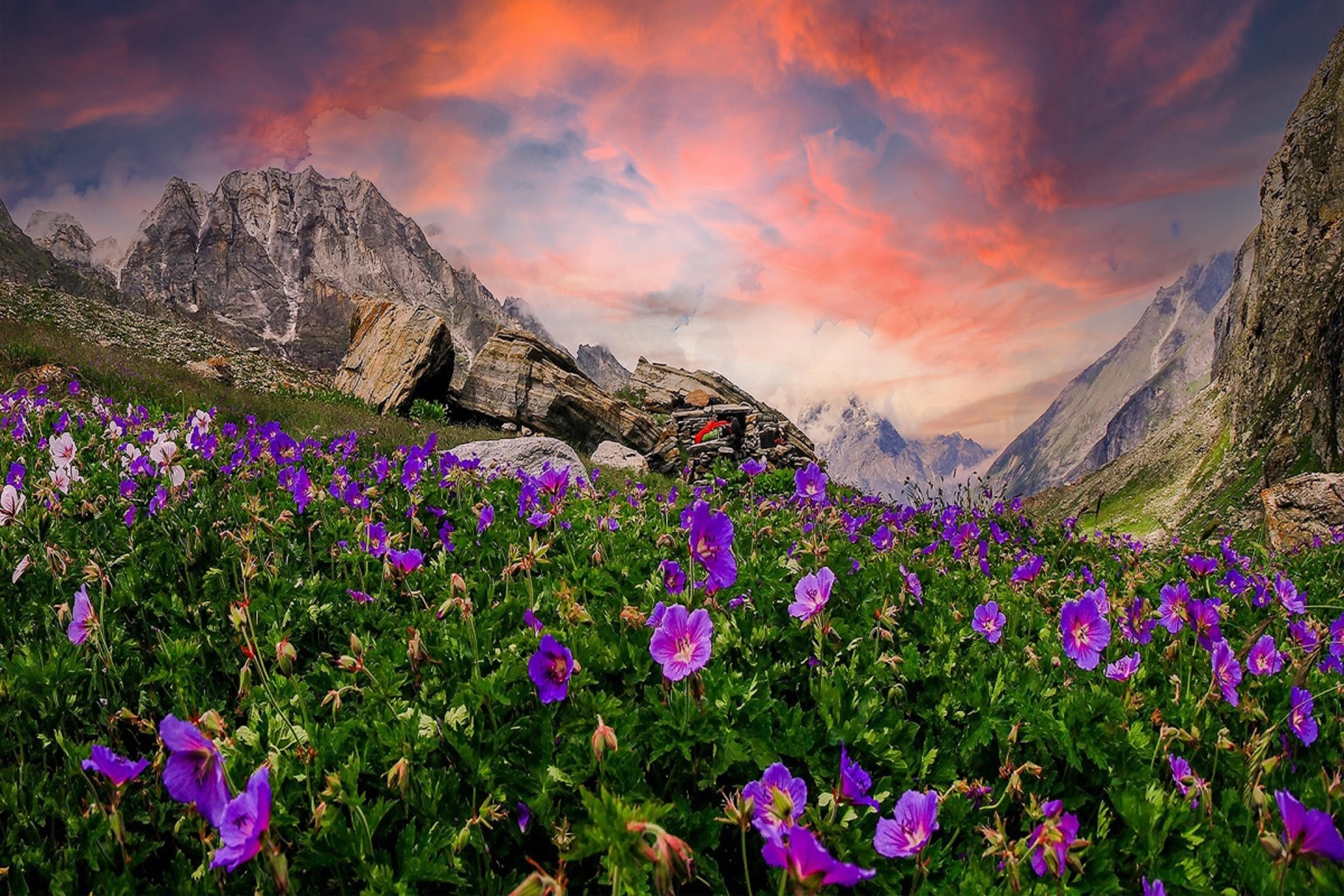
Best Time to Visit valley of flowers Trek
The best time to visit the Valley of flowers trek is between mid-July to mid-August, when the bloom is at its peak after the monsoon rains. June marks the start of the trek season with some early flowers, while September signals the closing window with withering blooms and golden meadows.
Tips for Trekkers
- Fitness: Basic physical fitness is essential as the trek involves moderate ascents and high altitude.
- Clothing: Pack warm layers, rain gear, and comfortable trekking shoes.
- Permit: Entry to the valley requires a government permit, which can be obtained at Ghangaria.
- Guides: While the trail is well-marked, hiring a local guide enriches the experience with insights about flora and local legends.
Final Thoughts
A trip to the Valley of Flowers is not just a trek; it’s a pilgrimage into nature’s untouched artistry. Whether you're a hiker, a photographer, or a dreamer, this Himalayan gem leaves you humbled, healed, and infinitely inspired. The valley whispers ancient tales, welcomes you with a floral embrace, and reminds you that in the lap of nature, beauty speaks in silent blooms.
Written By:
Birendra Bisht



Hotels at your convenience
Now choose your stay according to your preference. From finding a place for your dream destination or a mere weekend getaway to business accommodations or brief stay, we have got you covered. Explore hotels as per your mood.
